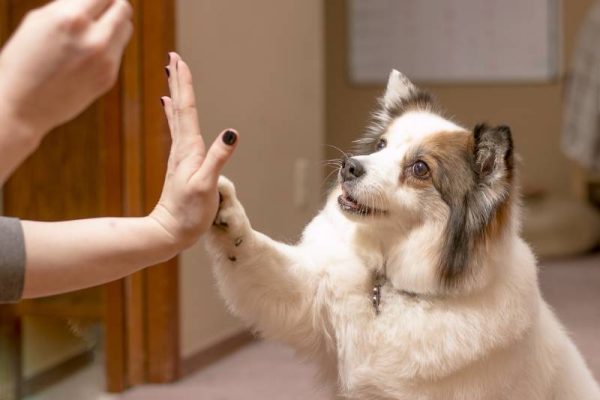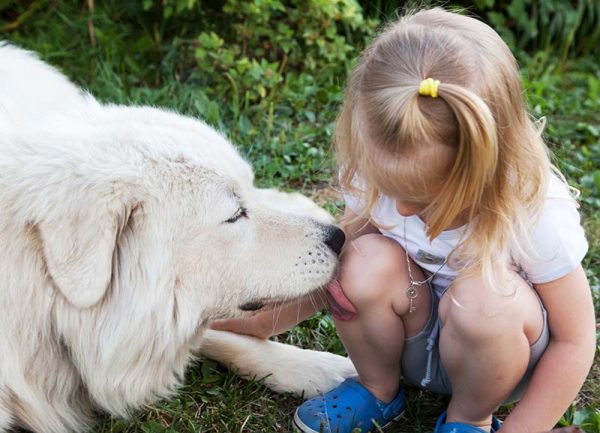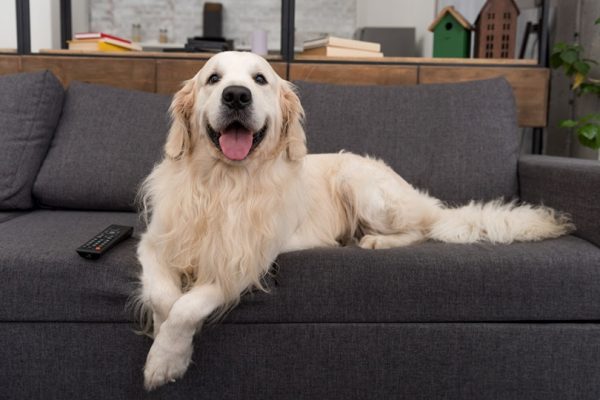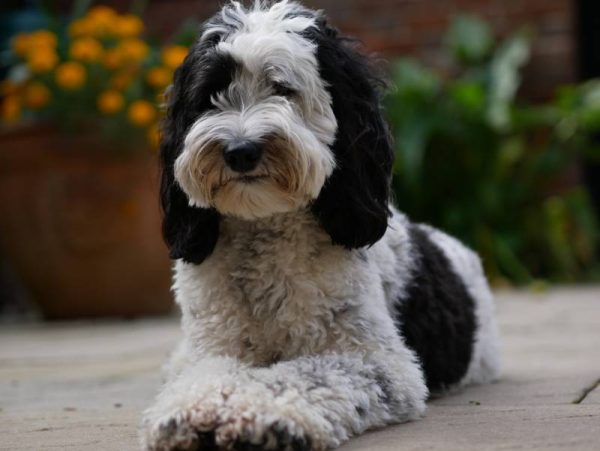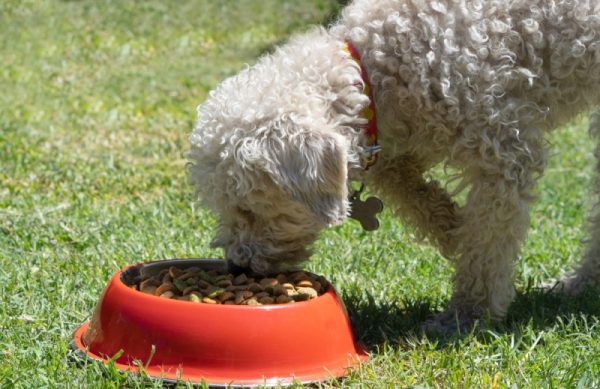If you spend enough time around dogs, you may notice them crossing their front paws from time to time. There are many assumptions and anecdotes for this, but we don’t know exactly why. Deciphering a canine’s behavior is challenging. After all, we can’t exactly ask them.
However, there are a few theories about why dogs cross their paws. Here are some of our favorites:

The 6 Possible Reasons Why Dogs Cross Their Paws
1. Comfort and Contentment
Some dogs may simply find it comfortable to sit with their paws crossed. It may just be a nice relaxing position from which they observe the world go by, that comes very naturally to some. They are content with their current position and feel well in themselves.
You’ll probably notice that some dogs cross their legs all the time while others don’t at all. It’s a matter of preferences, for the most part.
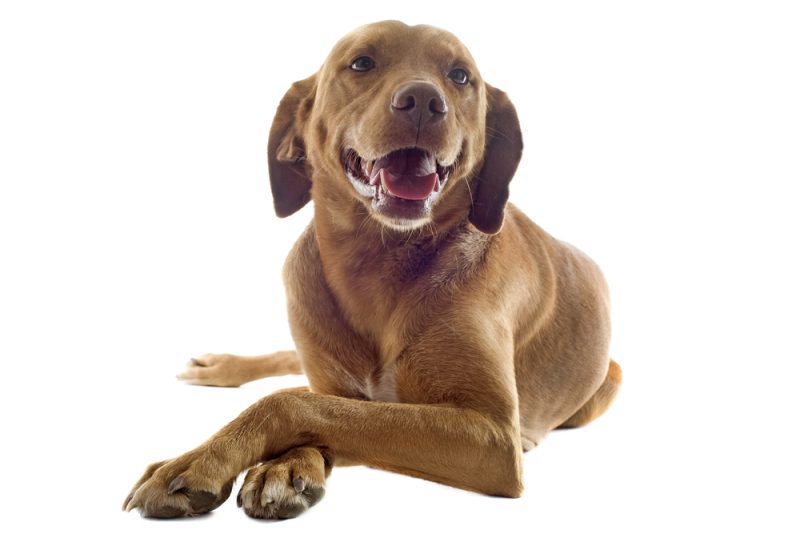
2. Communication
Dogs may also cross their paws to communicate with humans that they want some treats and have been rewarded for the same posture before. They may also be showing signs of playfulness, especially in the company of other dogs, by inviting them to play, sometimes lying low to the ground with their bum in the air, slowly crawling toward the other dog in a half submissive half playful manner, occasionally crossing their paws. There could be many things dogs are trying to tell us by crossing their paws, but generally, they do it when relaxed and content.
3. Imitation
Studies have shown that dogs learn partially by imitating other dogs (and even people, to some extent).1 Therefore, dogs could have learned to cross their paws by watching others. They may not do it for any particular reason other than it’s how they learned to lay down, especially if their humans found it entertaining and rewarded them with praise, attention, and treats, reinforcing the behavior.
It’s similar to human children picking up traits and habits from their parents.
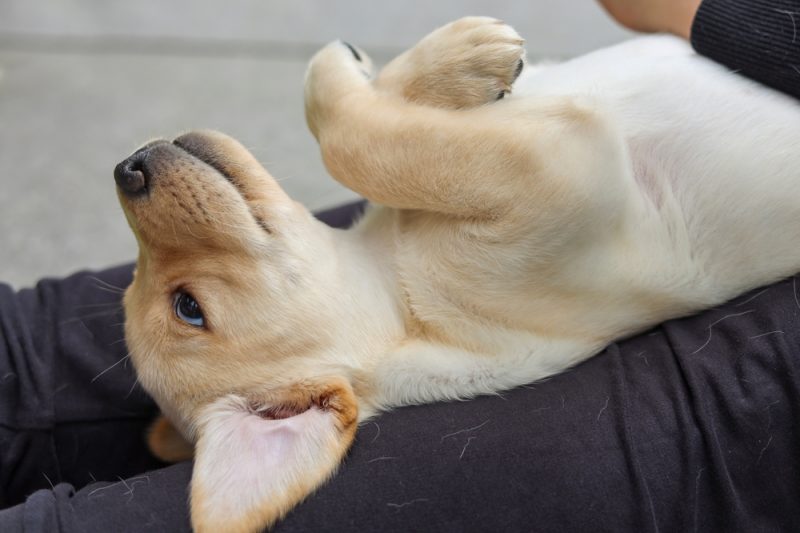
4. Balance
Dogs may cross their paws naturally as a part of their posture. Dogs with narrow or longer legs tend to do this the most, suggesting that it may be caused by how they’re built. It may be more natural for them to cross their paws due to their narrow, long bodies and limbs.
Similarly, dogs lying down on uneven or unstable surfaces may cross their paws to keep them balanced. It moves the center of their balance, which may help them remain balanced in certain situations. You may notice that your dog only crosses their paws in particular places, such as when lying down outside. In this case, it may simply be the easiest way for them to maintain balance or comfort.
5. Body Structure
Some dogs seem more prone to crossing their paws than others. While no studies have been done on this, some owners think that Labradors, Border Collies, and Poodles cross their paws more often than others, but this is purely anecdotal.
Therefore, crossing paws may be related to how their bodies are built or some innate trait in these breeds. You’ll notice that all of these dogs are larger, so it may be that it helps them remain balanced or comfortable.

6. Pain or Discomfort
Crossing paws can sometimes be a sign of pain or discomfort. The dog may be licking or chewing their paw or another painful part of the leg by propping it up on the other. They may be unable to properly put weight on it when standing due to an injury. Chronic conditions that affect their joints, muscles, or nerves are often to blame, especially if the dog is older, or a recent soft tissue injury or a sprain in younger active dogs. Skin allergies may also be responsible if the paws are itchy and the dog is licking them excessively.
If your dog suddenly starts crossing their paws, combined with limping, redness, or excessive licking, it could be a sign that something isn’t quite right with their paws. You may want to seek veterinary attention, especially if your dog is showing other signs of illness.

Final Thoughts
Dogs may cross their paws for several possible reasons. In most cases, it’s a matter of comfort and body posture. Dogs with long, narrow bodies and legs cross their legs more because they have more flexible legs. Generally, there isn’t anything to worry about if your dog exhibits this behavior. However, it may also indicate pain. The dog may not want to put weight on one paw or may lick it excessively, prompting them to place it on top of the other paw. Get your pooch checked out by the vet in that case.
Related Reads:
Featured Image Credit: bmf-foto.de, Shutterstock



